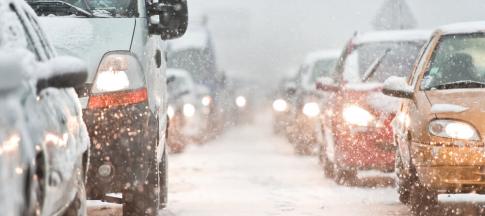
Driving at night requires a few more skills than driving in the daytime as vision reduces making it more difficult to spot other road users such as cyclists, pedestrians, and motorcyclists. You may also be more tired than normal.
When driving at night, you should:
- drive more defensively
- take your time
- pay close attention to other drivers
- monitor how you use your lights
Below, we share the most effective driving at night tips, including which lights to use, how to drive defensively and ways to prepare for nighttime driving.
Ways to drive safely at night
Use the correct lights
Many newer cars have daytime running lights which are on all the time. However, at dusk it’s best to put on your dipped headlights to improve visibility and to be seen.
Some vehicles have an automatic dipped beam system that turns the lights on and off depending on exterior light conditions.
Your high or full beam should only be used when there isn’t another source of light and you must switch back to dipped headlights when you can see oncoming traffic to avoid dazzling drivers.
Check your lights
You should do regular visual checks on all of your vehicle’s lights.
Legally, all your car's exterior lights must be operational, including the headlights, indicators and the number plate bulb.
If a light has gone out, replace it as soon as possible.
Get regular eye check ups
Driving when it’s dark becomes more difficult as we age because our eyes become less sensitive to light.
By law, you must be able to read (with glasses or contact lenses, if necessary) a car number plate made after September 1, 2001, from 20 metres. Test yourself and if you struggle, get checked straight away.
You should get regular eyesight check-ups. This should be done every two years or more frequently if your ophthalmic practitioner or optometrist recommends it.
Recognise the signs of tiredness
Drowsiness affects your reflexes. It’s like driving with a blood alcohol level of 0.5 grams per litre.
Recognise early signs of fatigue like:
- heavy eyelids
- having trouble staying in your lane
- struggling to remember where you’ve driven in the last mile
If you’re travelling a long distance, take a break where it’s safe to do so every two hours. Stop and have a drink, eat something and rest for a short while before continuing your journey.
Avoid distractions
Night driving requires extra focus, so distractions are more dangerous. You should try:
- keeping your mobile phone screen out of sight
- dimming dashboard lights
- turning off all interior lights to reduce internal reflections and glare
Don’t stare at oncoming traffic
Focus on the left-hand side of the road and follow the line markings. This keeps you in your position but reduces the impact of glare from neighbouring cars.
Keep your windows clean
Condensation is more dangerous at night. It can impair vision in daylight, but at night the issue multiplies due to glare.
Window condensation can make glare more intense, reducing vision and reaction time.
Am I insured to drive at night?
Yes – your car insurance is still valid when you drive at night.
Can I drive at night with a black box?
You’ll need to check the terms of your black box insurance as some policies have a curfew, meaning it’s not legal to drive outside these hours.
Our black box insurance has no curfew, but driving at night could increase your cost.
A black box monitors how and when you drive.
Statistically, driving is riskier at night – RoSPA estimates that 40% of all collisions happen in darkness.
Can learner drivers drive at night?
Yes. Check your learner driver insurance covers nighttime driving, too.
What extra safety equipment to pack when driving at night
We recommend having these items in your car:
- torch
- blankets
- emergency phone charger
- de-icer
- ice scraper
These will help if you break down at night. A torch allows you to inspect your tyres and other areas, while blankets and an emergency phone charger are there in case of emergencies.
It gets cold at night, so having a de-icer and scraper on hand is recommended.
Read our emergency items checklist to stay prepared.


